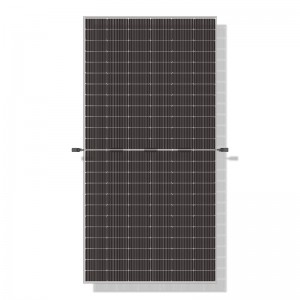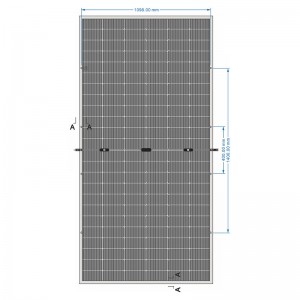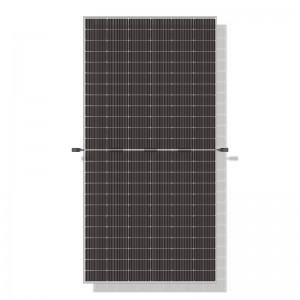M10 MBB, N-Type TopCon 144 half cells 560W-580W bifacial solar module
Ultra-high Power Generation/Ultra-high Efficiency
Higher Bifacial Gain
Enhanced Reliability
Lower LID / LETID
High Compatibility
Optimized Temperature Coefficient
Lower Operating Temperature
Optimized Degradation
Outstanding Low Light Performance
Exceptional PID Resistance
| Cell | Mono 182*91mm |
| No. of cells | 144(6×24) |
| Rated Maximum Power(Pmax) | 560W-580W |
| Maximum Efficiency | 21.7-22.5% |
| Junction Box | IP68,3 diodes |
| Maximum System Voltage | 1000V/1500V DC |
| Operating Temperature | -40℃~+85℃ |
| Connectors | MC4 |
| Dimension | 2278*1134*35mm |
| No.of one 20GP container | ///PCS |
| No.of one 40HQ container | 620PCS |
12-year warranty for materials and processing;
30-year warranty for extra linear power output.

* Advanced automated production lines and first-class brand raw material suppliers ensure that solar panels are more reliable.
* All series of solar panels have passed TUV, CE, CQC, ISO,UNI9177- Fire Class 1 quality certification.
* Advanced Half-cells, MBB and PERC solar cell technology, higher solar panel efficiency and economic benefits.
* Grade A quality, more favorable price, 30 years longer service life.
Widely used in residential PV system, commercial & industrial PV system, utility-scale PV system, solar energy storage system, solar water pump, home solar system, solar monitoring, solar street lights, etc.
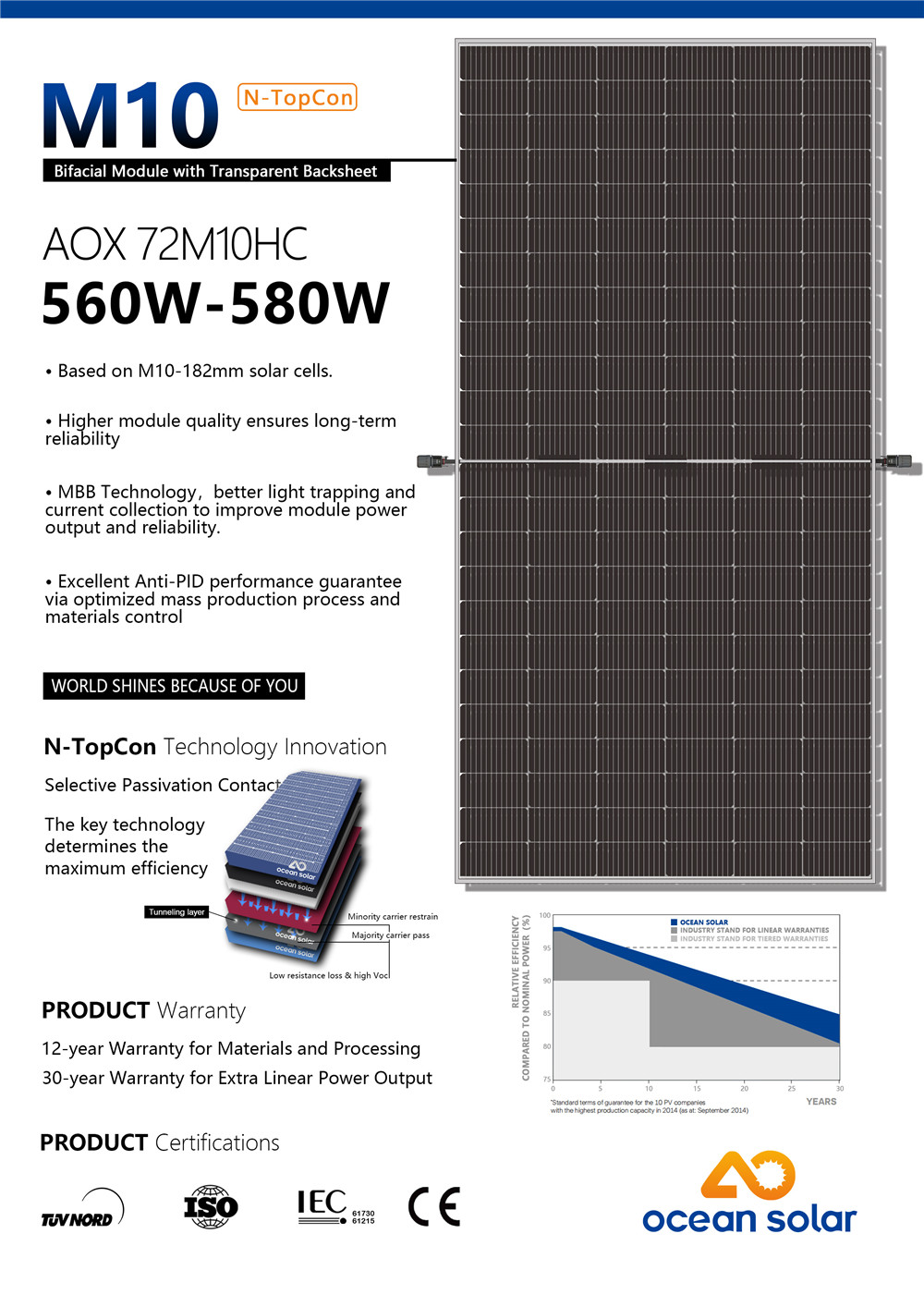
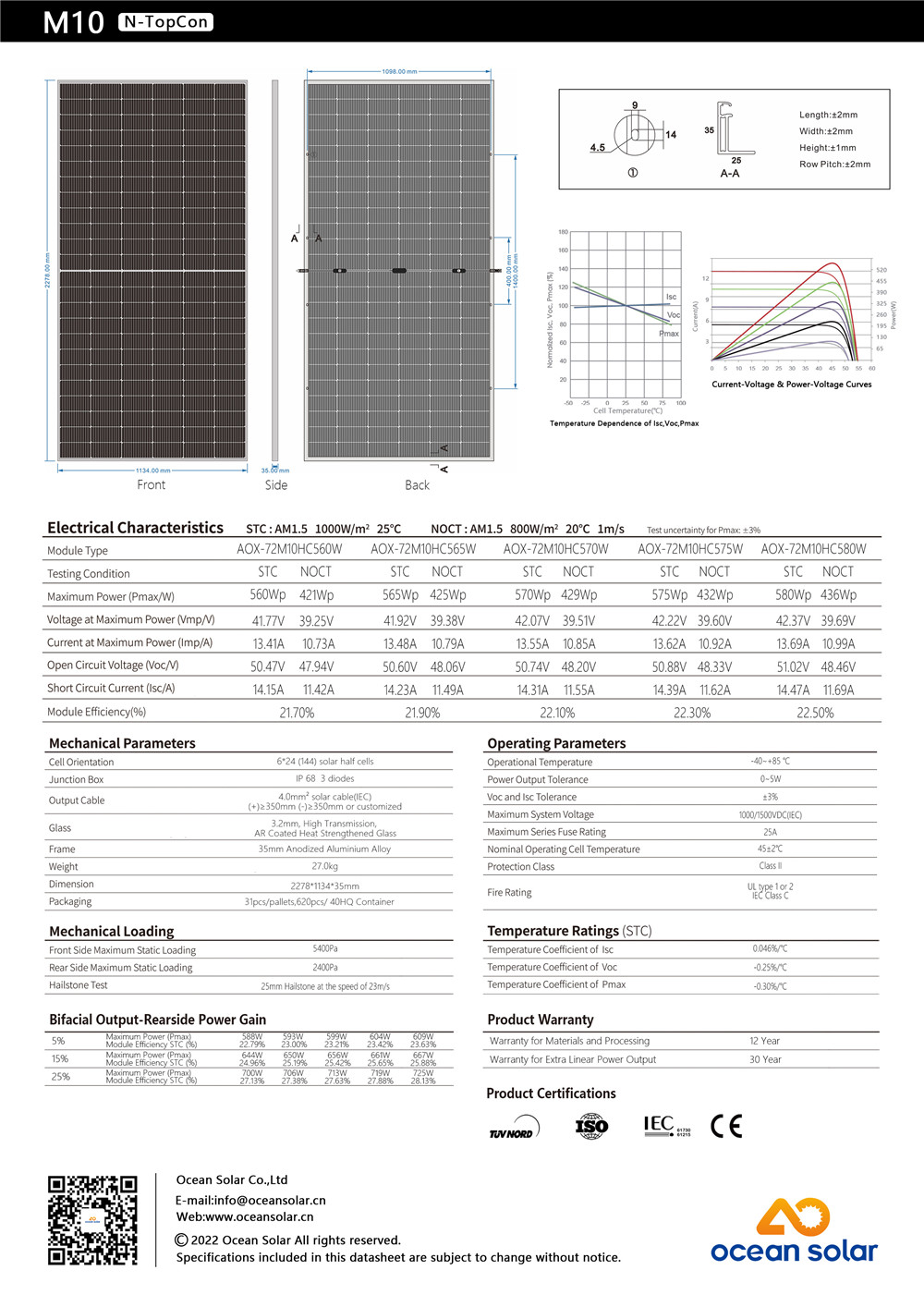
A bifacial solar module is a type of solar panel that generates electricity from both sides of the panel. Unlike most traditional solar panels, which harvest energy from only one side, bifacial solar modules are designed to capture sunlight from both sides, potentially increasing the amount of energy that can be generated by as much as 30%.
There are several different types of bifacial solar modules on the market, including glass-glass and glass-backsheet designs. Glass-to-glass modules have a transparent glass layer on the front and back of the module, while glass-to-back designs have a transparent back that allows sunlight to penetrate the back of the panel. Regardless of the specific design, the basic principle behind a bifacial solar module is the same -- generating energy from both sides of the panel.
One of the main advantages of bifacial solar modules over more traditional solar panels is their ability to generate more electricity per square meter of panel. Because they can capture sunlight from both sides, bifacial solar modules can generate more overall energy, making them a more cost-effective solution for some applications. They also tend to last longer than traditional solar panels due to their double-sided design and increased durability.
Another advantage of bifacial solar modules is their versatility. Because they can capture sunlight from both sides, bifacial solar modules can be installed in a wider range of environments than traditional solar panels. They can be mounted on vertical surfaces like walls or fences, horizontal surfaces like roofs, or even on water. This flexibility makes them an excellent choice for a variety of applications, from large commercial solar farms to small residential solar panel systems.
However, bifacial solar modules also present some challenges. One of the main challenges is their cost – bifacial solar modules tend to be more expensive than traditional solar panels due to their complex design and manufacturing process. Additionally, they require careful installation and positioning to ensure that both sides of the module receive an equal amount of sunlight, which adds to the overall installation cost.
Overall, bifacial solar modules are a promising new technology that has the potential to revolutionize the solar industry. While they're still relatively new and somewhat expensive, their ability to generate more energy per square meter and their added versatility make them an excellent choice for those looking to invest in renewable energy solutions. As the technology continues to develop and become more mainstream, we can expect to see more and more bifacial solar modules being used in a variety of applications.


